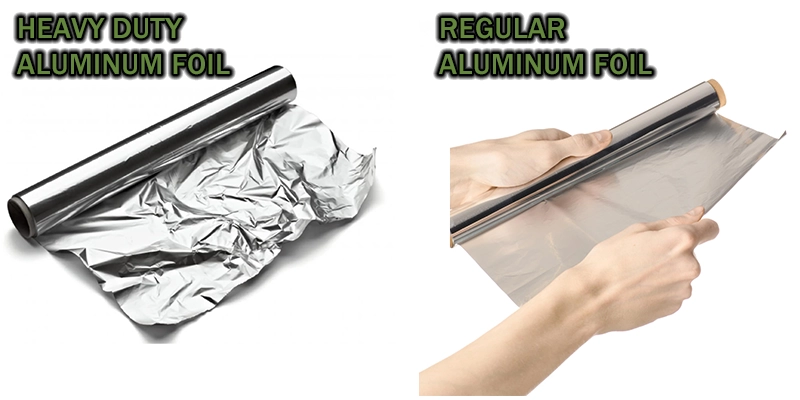Aluminum foil is a must in the kitchen, both for home and commercial use. It can even be used as a cooking container (aluminum foil pans). In supermarkets, you can find aluminum foil divided into heavy-duty and regular foil. So, what is the difference between heavy duty and regular foil?
Henan Yongsheng Aluminum is an aluminum foil manufacturer and supplier, and I will give you a comprehensive explanation of the difference between heavy duty and regular aluminum foil.
Gauge And Thickness Differences
The biggest difference between heavy-duty foil and regular foil is thickness. The former is thicker, stronger, and more durable. When you use aluminum foil for cooking, thinner regular foil cannot withstand high temperatures and heavy food.
You should decide whether to buy heavy-duty foil based on your usage.

About Regular Aluminum Foil
Regular foil is the most common type of foil on the market. Anything not marked as “heavy duty” can be used as regular foil. Regular foil is thinner and cheaper than heavy duty foil. You can buy it at your local supermarket, factory wholesale, Amazon, and others.
Regular foil is suitable for home use, for wrapping food, lining plates, etc. It is not suitable for direct use on the grill because it is easy to tear and break.
About Heavy Duty Foil
Heavy duty foil is not easy to break, is durable, and is thicker than regular foil. It is not afraid of high temperatures and can also bear heavy objects. But the price is higher than regular foil.
If you still have questions, such as, Is heavy duty foil worth it?
The main advantage of heavy-duty aluminum foil is its durability and longevity. The thicker gauge makes it more resistant to tears, punctures, and general wear and tear than standard foil. Heavy-duty foil can be reused multiple times, extending its life. Heavy-duty foil can do everything standard foil can do that regular foil cannot.
How Much Heat Can Aluminum Foil Withstand
Heavy-duty aluminum foil can usually withstand temperatures up to 500 °C or even higher without deforming or melting. The reason is that heavy-duty aluminum foil is thicker and denser, and the thickness of the aluminum foil layer is usually between 0.030 and 0.050 mm. Thicker aluminum foil can better withstand high temperatures and will not easily deform due to heat.
Regular aluminum foil is relatively weak in high temperature resistance and can usually only withstand temperatures around 200 °C. Ordinary aluminum foil is thinner, usually between 0.012 and 0.020 mm. Thinner aluminum foil structures are more likely to deform, melt, or break at high temperatures.



